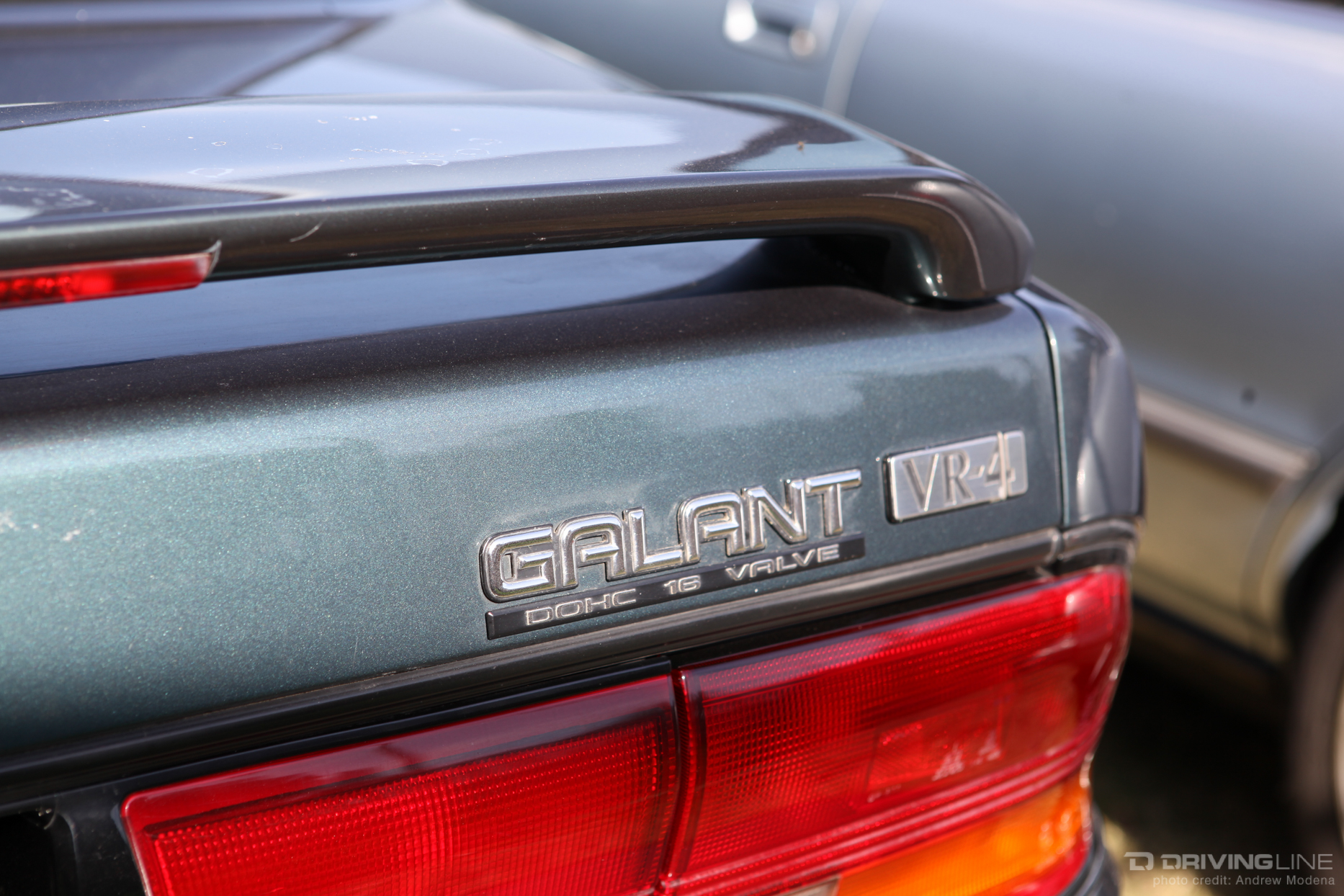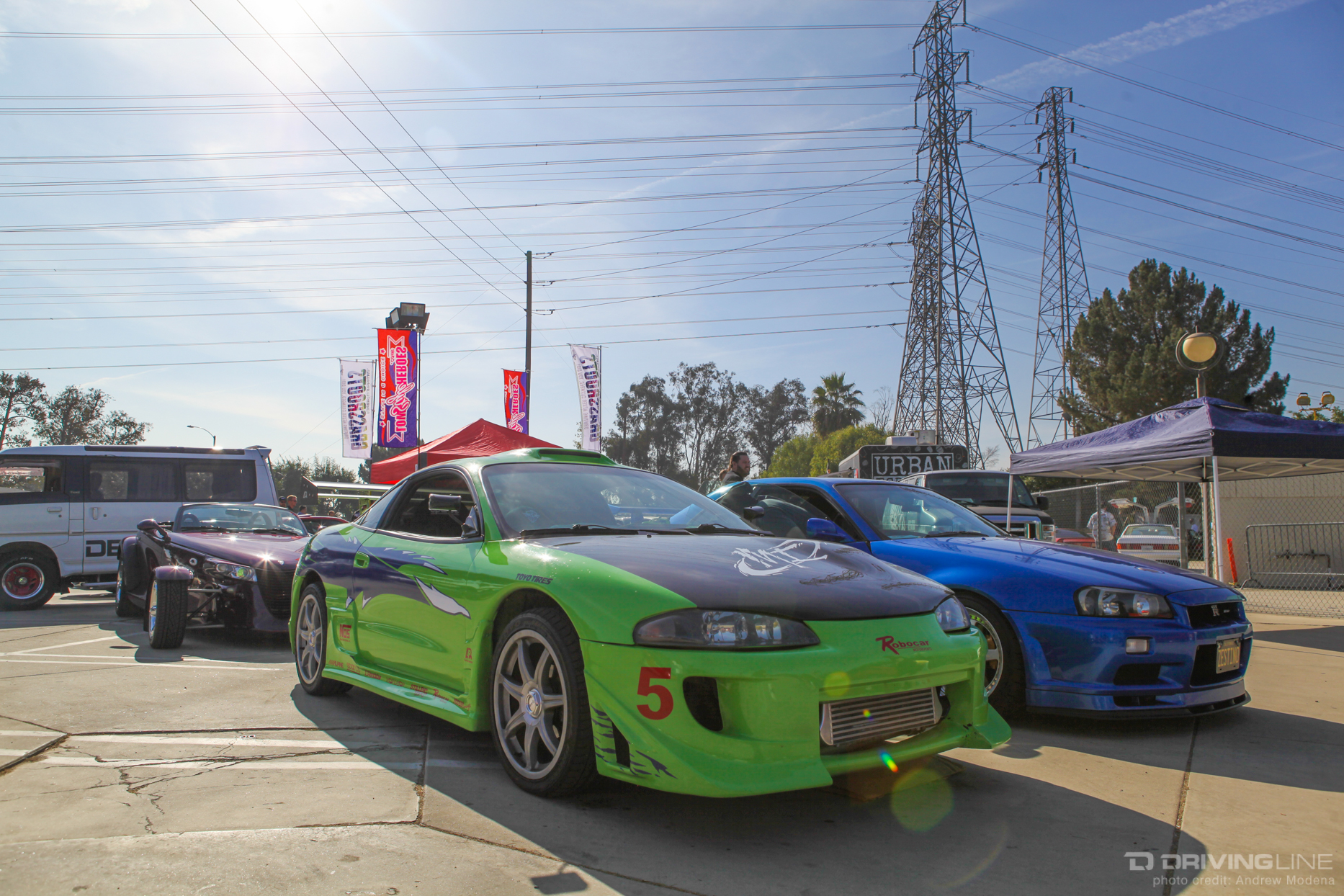Mitsubishi was once known for making fun to drive, high tech cars. Lancers, Galants and Eclipses with big wings, huge fog lights, hood vents, all-wheel drive and turbocharged motors roamed the streets and won on the track.
These days, Mitsubishi's lineup consists of mediocre CUVs and entry-level cars for people with bad credit. Let's reminisce about the good ol’ days when some of the coolest cars available wore the three-diamond emblem.
1. 3000GT VR-4
During the Japanese “Bubble Era” of the late '80s and early '90s, Japanese car manufacturers were coming out with their wildest cars. That era gave birth to cars like the R32 Nissan Skyline GT-R, FD Mazda RX-7 and Mark 4 Toyota Supra.

Being that this period was peak Mitsubishi, they responded was the 3000GT VR-4 (or GTO as it was called outside the U.S.). It was a two-door coupe equipped a twin turbocharged six-cylinder motor making up to 320hp, all-wheel drive and all-wheel steering.

Mitsubishi loaded up the 3000GT with all the technology they could throw at it: active aerodynamics, electronically controlled suspension and active exhaust modes. These features are commonplace in today’s performance cars but were very high tech for the early '90s.

Although the 3000GT VR-4 had the features and performance to compete with Japan’s finest performance cars, it has yet to achieve the iconic status of the R32, FD RX-7 or Mark 4 Supra.
2. Galant VR-4
The '89-'93 Galant VR-4 was Mitsubishi’s first high performance all-wheel drive sedan and the forefather to the Lancer Evolution. It was developed in the early '90s when Mitsubishi wanted to compete in the Group A class of the World Rally Championship.

In order to compete in Group A, manufacturers were required to produce at least 5,000 versions of a production car with a turbocharged four-cylinder and all-wheel drive. So Mitsubishi took the their midsized Galant family car and dropped a turbocharged 195hp 4G63 four-cylinder motor under the hood that sent power to all four wheels

The VR-4 did 0-60 in 7.3 seconds and ran the ¼ mile in 15.3. For comparison, a standard Galant took 9.6 seconds to get to 60 and 18 seconds to cross the quarter mile.

There was even a hotter version tuned by AMG—yes, the same AMG known for their high performance Mercedes Benzes.

In 1994, the cars in Group A shifted to more a compact chassis to navigate the tight rally courses, so Mitsubishi moved on from the Galant and put the 4G63 AWD drivetrain into the smaller Lancer, creating the Lancer Evolution. The rest is history.

3. Delica Star Wagon 4x4
Like a Japanese VW Westfalia and similar to the 4x4 Toyota Van, the Delica was a cab over, mid-engined van with a truly capable 4WD system thanks to a two speed transfer case and sharing parts with the Montero SUV. This allowed it to navigate over nearly any terrain in the world. Coupled with its engine layout that maximized interior space, it naturally became a van of choice for overlanders.

The third-generation ('86-'94) Delica was sold in America as the Mitsubishi Van, but we never got the 4WD turbo diesel version, stateside. With it now qualifying to be imported into the U.S. and the popularity of the whole #VanLife thing, it has gained a cult following in the U.S. and Canada.

4. Pajero Evolution
Where the Montero (or Pajero as it was called outside of the U.S.) was built to take on the roughest terrain on Earth, the Pajero Evolution was created with one purpose in mind: dominate the grueling Paris-to-Dakar desert race.

When the FIA introduced the T2 production-based class to the Dakar Rally, Mitsubishi developed the Pajero Evolution to meet the homologation requirement of making 2,500 production versions of the race car to compete in the class.

In order to be more competitive, Mitsubishi took a two-door short wheelbase Pajero and gave it wider fenders, double wishbones and coil springs, a specially tuned transmission, new differentials and a 3.5L turbocharged V6 making 276hp.

Inside, a pair of Recaros were added to keep you in your seat while you’re blasting though the African desert. I like to think of the Pajero Evolution as a '90s Japanese Ford Raptor.

No stranger to competing in the Dakar Rally, Mitsubishi had already established themselves with a few victories since when they first started competing in 1983, but Pajero took that off-road prowess up a notch. In its first year of competing, the Pajero Evolution dominated not only the T2 class but also the entire 1998 Dakar Rally. Over 25 years, they won 12 times and still hold the Guinness World Record for most Dakar Rally wins by a manufacturer.
5. Eclipse GST & GSX
A car that needs no introduction is the Mitsubishi Eclipse. In the early '90s it was the only sport compact available with a turbocharged motor and all wheel drive in North America. The GST packed Mitsubishi's legendary 210hp 4G63 turbo motor in two-wheel drive form, and the GSX had the same motor but sent power to all four wheels.

The Eclipse gained popularity in road, drag and rally racing. It claimed championships in SCCA, IDRC and NHRA racing, to name a few.

The Eclipse reached icon status when a second-gen ('95-'99) Eclipse was featured as the hero car in "The Fast & The Furious."

By the time the movie was released—and before Mitsubishi had any idea the effect that Paul Walker's green Eclipse would have on the world—Mitsubishi had already released the third-gen Eclipse that was no longer sporty and lacked all-wheel drive or a turbo. Fortunately, it wouldn’t be long until the Lancer Evolution would reach U.S. shores, picking up where the GSX left off.

6. Lancer Evolution IX Wagon
The Lancer Evolution is probably the most popular car on the list but one of the rarest (and greatest version) is the Evolution IX Wagon. The Lancer had always been offered in a wagon but not until the Evolution IX was an Evo wagon available.

From the rear quarter panels forward, it's hard to differentiate the Evo Wagon from the IX sedan. The wagon features the same blistered fenders, 286hp 4G63, adjustable differentials and active yaw control of the Evo IX and adds more cargo room thanks to a longer roof and a rear end flanked by Volvo-like rear taillights.

The Wagon was also available in MR trim, which featured lighter Enkei wheels, retuned Bilstein shocks and parts available from Ralliart, Mitsubishi's in-house tuning arm.

Only 2,500 were made and sold within Japan. Unfortunately, the closest the U.S. got to the Evo Wagon was the front-wheel drive Lancer Ralliart Sportback, which was only offered for one year in 2004. I eagerly await 2030 when they'll be eligible to import and register in the U.S.

If you love Mitsubishis, then you need to get out to Mitsubishi Owner's Day.